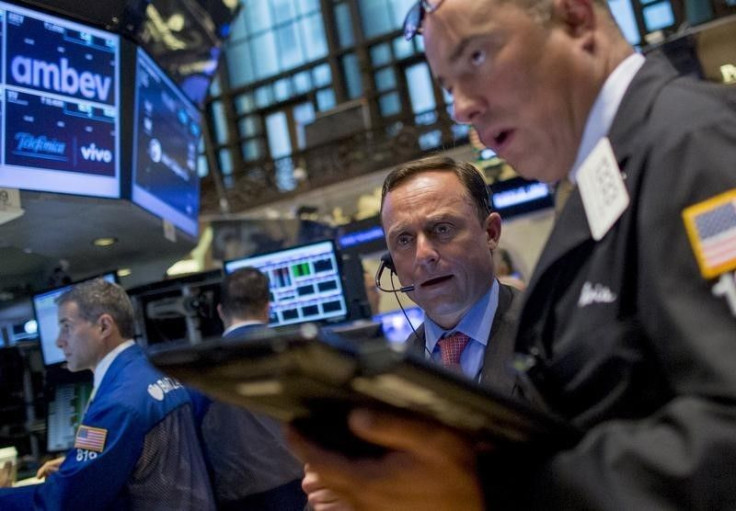Dow Jones Industrial Average Rallies After China Launches More Stimulus

This story was updated at 2 p.m. EDT
U.S. stocks seesawed in afternoon trading Wednesday, with the Dow Jones Industrial Average tumbling 100 points to erase morning gains after leaping as much as 159 points following the opening bell. All three major U.S. indexes initially jumped roughly 1 percent after China unveiled further stimulus measures to boost flagging growth in the world’s second-largest economy.
However, stocks struggled to maintain early gains, with the major averages trading lower. The Nasdaq composite eased after shares of Apple Inc. (NASDAQ:AAPL) traded mildly lower during its highly anticipated event Wednesday, where the world's most valuable company is expected to unveil the latest versions of the iPhone 6S and iPhone 6S Plus.
The Dow Jones Industrial Average (INDEXDJX:.DJI) fell 11.82 points, or 0.07 percent, to 16,480. The Standard & Poor's 500 index (INDEXSP:.INX) dipped 0.76 points, or 0.03 percent, to 1,968. The Nasdaq composite (INDEXNASDAQ:.IXIC) lost 1.04 points, or 0.02 percent, to 4,811.
Stock prices have been on a wild roller-coaster ride in recent weeks, ignited by fears of China’s economic slowdown. Most economists previously anticipated the U.S. Federal Reserve would announce raising interest rates this month for the first time in almost a decade, but some experts indicate its decision could come down to the wire because of the recent stock-market gyrations.
But as the Fed moves closer to tightening monetary policy, it will likely shift the stock market into a more volatile environment as the market becomes less dependent on the central bank’s loose measures put in place in the midst of the Great Recession to help prop-up growth.
Although normalizing monetary policy is painful, it’s necessary in order to return the markets to a state in which supply and demand determines prices free of the central bank’s “protective net,” according to Douglas Coté, chief market strategist at Voya Investment Management.
“While it’s hard for investors experiencing negative returns to see how this is a good thing, normalization ultimately lowers tail risk — black swans, like the extreme events of 2008 that almost destroyed the global financial system. So the Fed, in its desire to prevent another such meltdown down the road, may be willing to abide a market correction in the near term,” Coté said in a research note.
China’s benchmark Shanghai Composite index closed up more than 2 percent Wednesday after China's finance ministry launched more stimulus to support the country's slowing economy. The National Development and Reform Commission (NDRC) approved two infrastructure projects worth nearly 70 billion yuan ($11 billion).
The rally comes a day after data showed Chinese imports fell for the 10th month in a row, signaling the country’s move to devalue the yuan last month has yet to have a major effect.
Meanwhile, Japan's Nikkei index surged 7.7 percent, posting its biggest gain since October 2008, helped by the prospect of corporate tax cuts and additional stimulus in China.
European stocks also rallied on further stimulus measures in Asia, with the pan-European STOXX 600 up more than 2 percent. Germany's DAX and France's CAC leaped 1.7 percent and 2.6 percent, respectively.
Oil prices traded lower Wednesday, with West Texas Intermediate crude, the benchmark for U.S. oil prices, down 1 percent to $45.51 per barrel for October delivery on the New York Mercantile Exchange. On the London ICE Futures Exchange, Brent crude, the global benchmark for oil prices, lost 0.8 percent to $49.15.
© Copyright IBTimes 2025. All rights reserved.





















